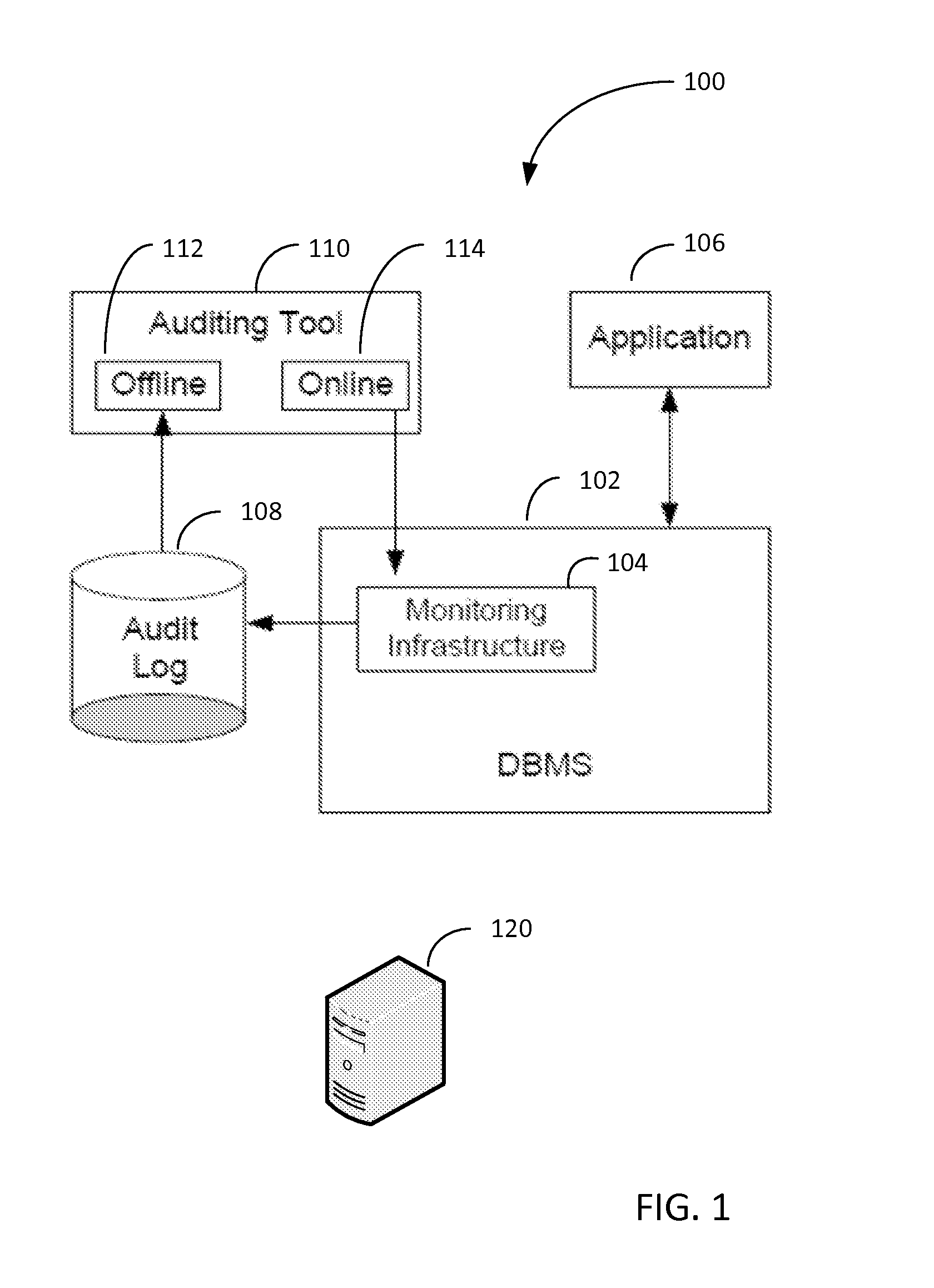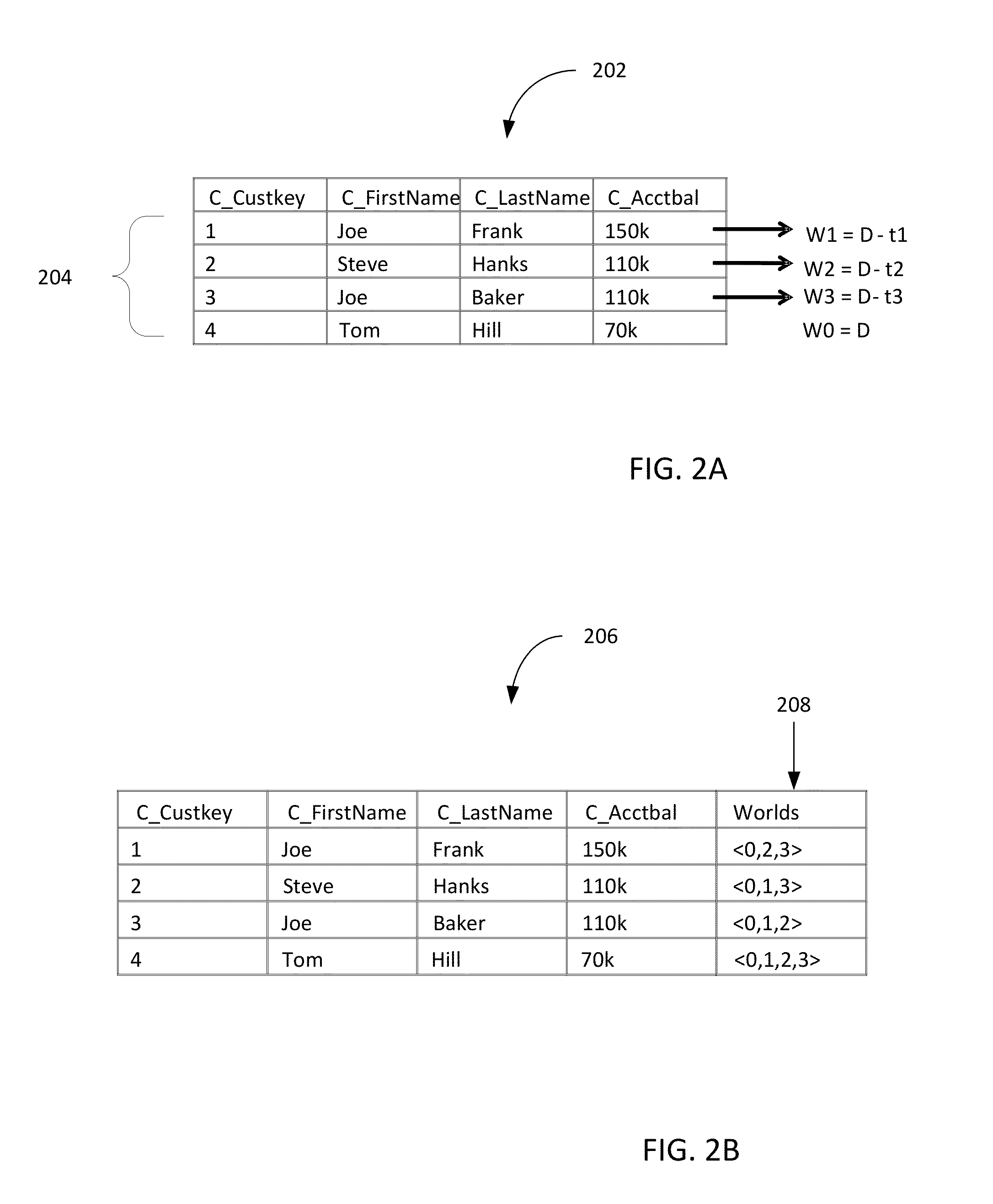Efficient fine-grained auditing for complex database queries
a database query and fine-grained technology, applied in the field of efficient fine-grained auditing of complex database queries, can solve the problems of prohibitively expensive approach, prohibitively expensive iteration (similar to a cross-product operator), and high implementation cos
- Summary
- Abstract
- Description
- Claims
- Application Information
AI Technical Summary
Benefits of technology
Problems solved by technology
Method used
Image
Examples
first example
A First Example
[0030]For the purposes of illustration of query differentials, consider the following example from a hypothetical health care database that has a Patients table and a Disease(PatientID, Disease) table. Consider the query Q:
select Name, Age, Zipfrom Patients P, Disease Dwhere P.PatientID = D.PatientID and D.Disease = ‘cancer’
[0031]Suppose it is desired to check if the above query referenced the record of a patient named Alice, the differential of the above query with respect to the record would be the corresponding rewritten version (Q′) of the above query that excludes the patient Alice as shown below.
select Name, Age, Zipfrom Patients P, Disease Dwhere P.PatientID = D.PatientID and D.Disease = ‘cancer’ and P.Name ’Alice’
[0032]If the result of the queries Q′ and Q are different, then query Q is defined to have accessed patient Alice's record. It should be appreciated that checking if the query differential is equivalent to the query may require the execution of bot...
PUM
 Login to View More
Login to View More Abstract
Description
Claims
Application Information
 Login to View More
Login to View More - R&D
- Intellectual Property
- Life Sciences
- Materials
- Tech Scout
- Unparalleled Data Quality
- Higher Quality Content
- 60% Fewer Hallucinations
Browse by: Latest US Patents, China's latest patents, Technical Efficacy Thesaurus, Application Domain, Technology Topic, Popular Technical Reports.
© 2025 PatSnap. All rights reserved.Legal|Privacy policy|Modern Slavery Act Transparency Statement|Sitemap|About US| Contact US: help@patsnap.com



